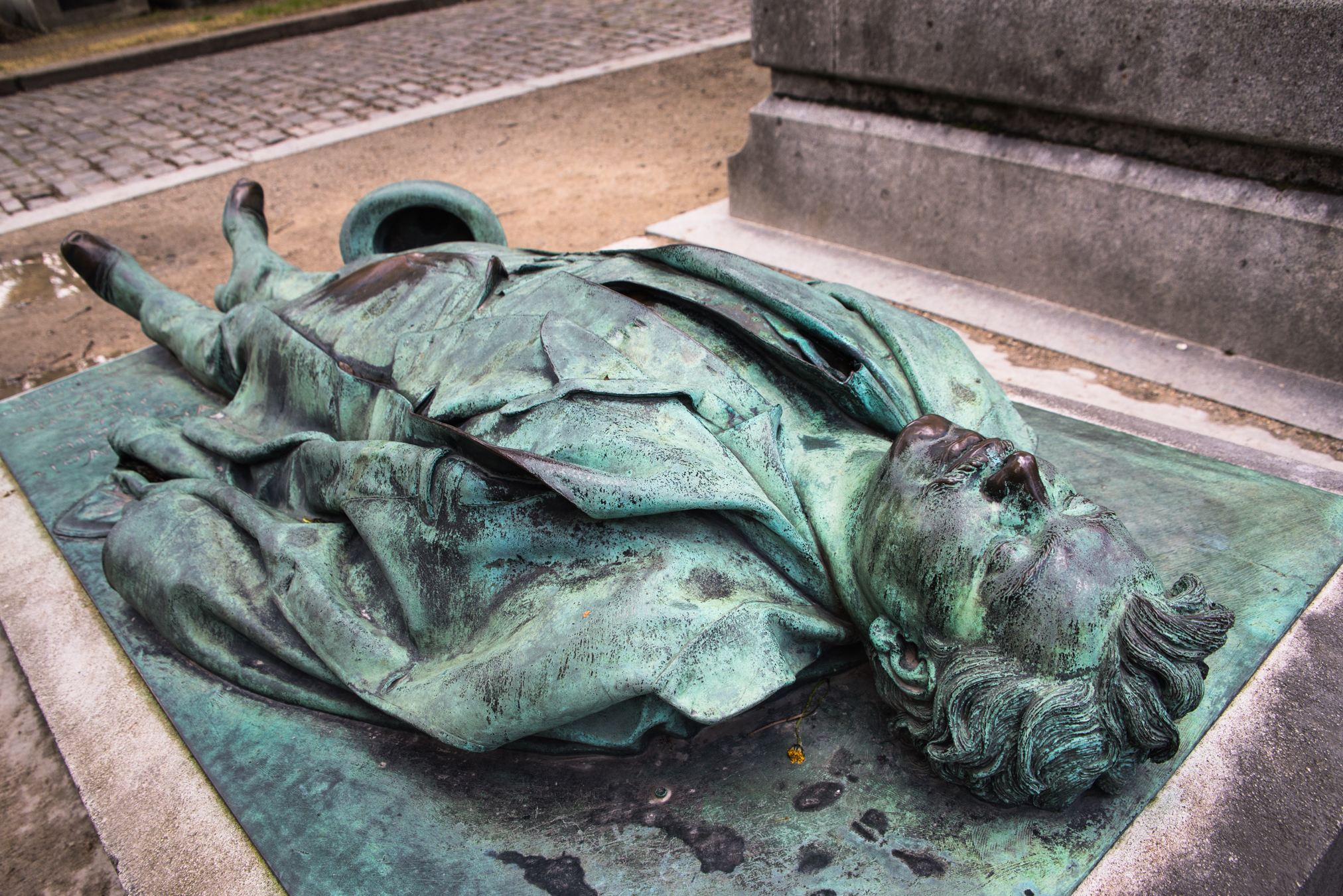
Victor Noir was a hero. A journalist writing for “Le Marsaillaise”, a newspaper critical of the reign of Napoleon III, he dueled with “Le Prince Imperial” Bonaparte. The prince, loyal to Napoleon III, had insulted the journalists of another magazine, with whom young Victor, only 22, felt solidary.
At 14:00 on January 10th 1870, a single shot was fired.
Victor Noir collapsed, dead.
History avenged Victor. While Le Prince Imperial Bonaparte perished seven years later in the Zulu wars in far-away South Africa, Victor’s burial at the Père Lachaise cemetery was attended by 100,000 people. His tombstone, sculpted by master Jules Dalou, is a bronze replica of Victor’s dead body as it lies stretched out peacefully: his high hat next to him, a pink dahlia in his hand, his crotch bulging in the manner of a true hero.
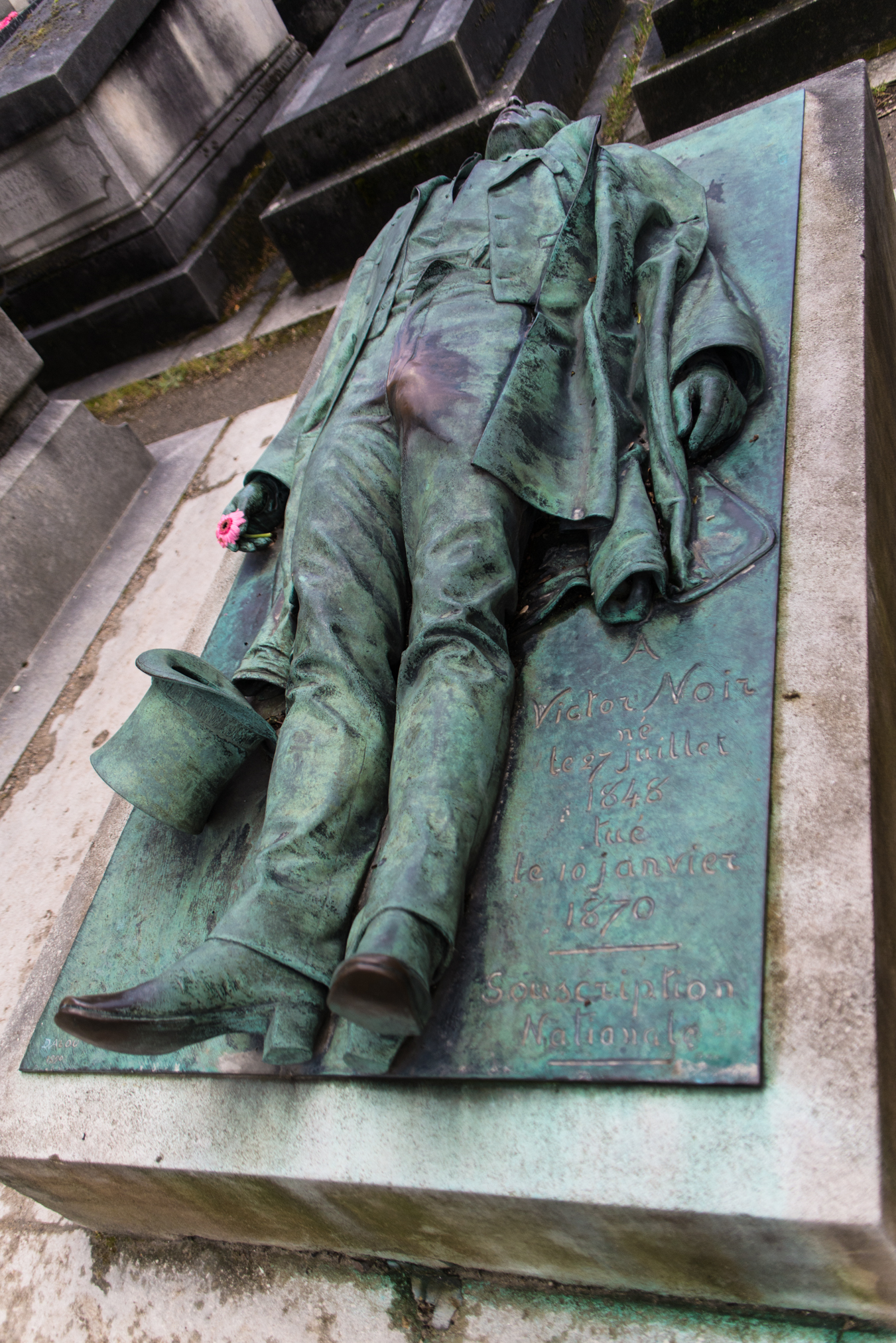
Victor Noir quickly turned into a sex symbol, a posthumous Casanova. Women who kiss his bronze lips, or rub his crotch, nose or feet will have their sex life spiced up, or so the lore goes. And it shows – in the past 140 years, his bronze crotch, nose and feet have been polished shiny – to the extent that in 2004 his grave was fenced off to prevent further damage. One is left to wonder: is the sex-life of Parisians so depressing that they have to take to rubbing or even straddling a bronze statue, or is it extra exciting because they are doing exactly that?
The fence has been taken down in the meantime – supposedly following protests of the female half of the population of Paris. Nothing should stand in the way to a blissful sex life!
“What if all this is not true, but every time someone rubs his crotch, Victor has an orgasm?” K says to me as we pay our respect at his grave.
“Then he went to heaven.” I say, rubbing his crotch, just to be on the safe side.
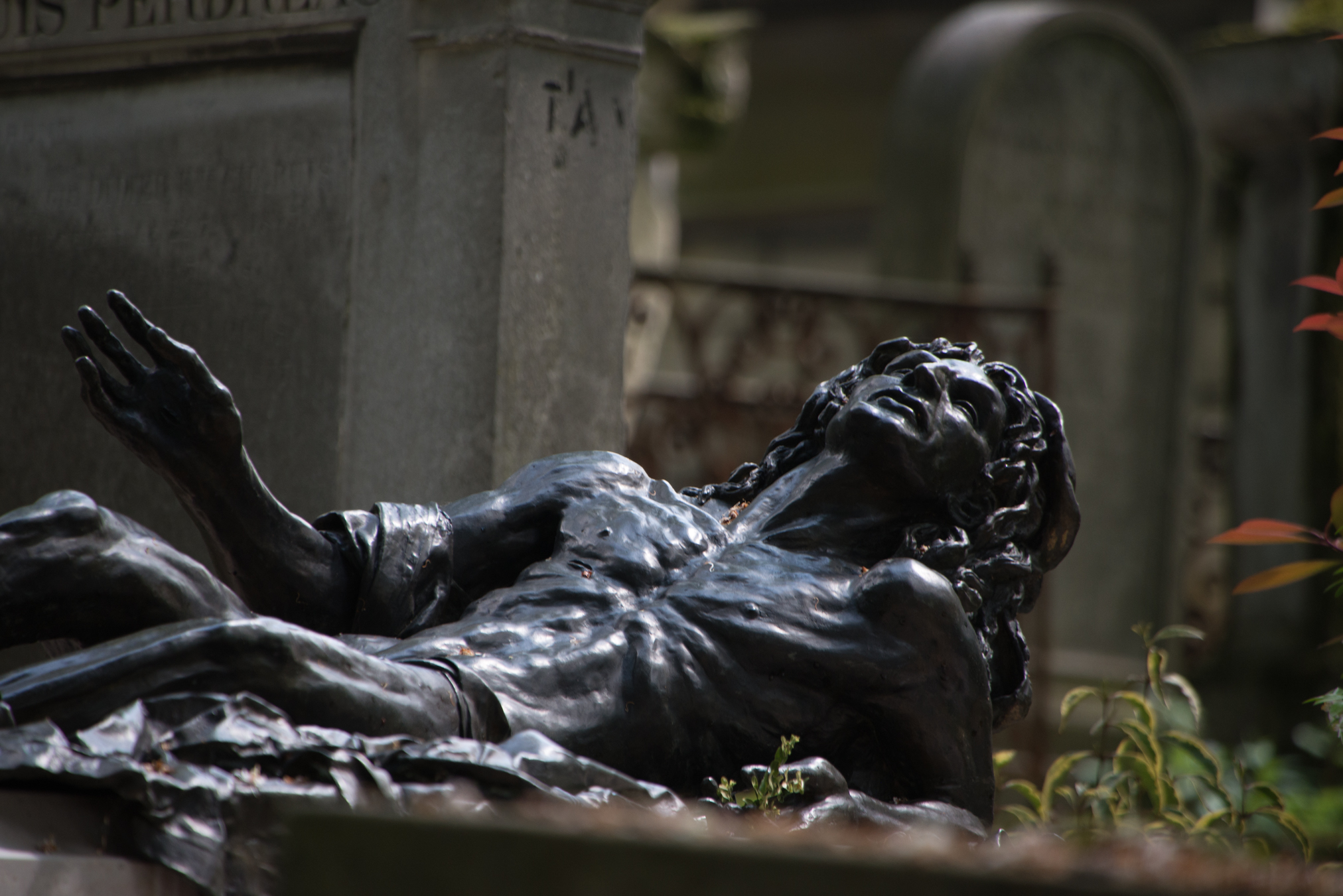
Victor, the grand hero, has died La Petite Mort.
La Petite Mort, the little death, was a term used to describe the brief state of loss of consciousness before the word orgasm was invented. There is however another bronze sculpture at the cemetery of Père Lachaise, which eternalizes the passed-away not in a state of peaceful sleep, but in this moment between joy and pain, where feelings are so intense that time is suspended: eternity.
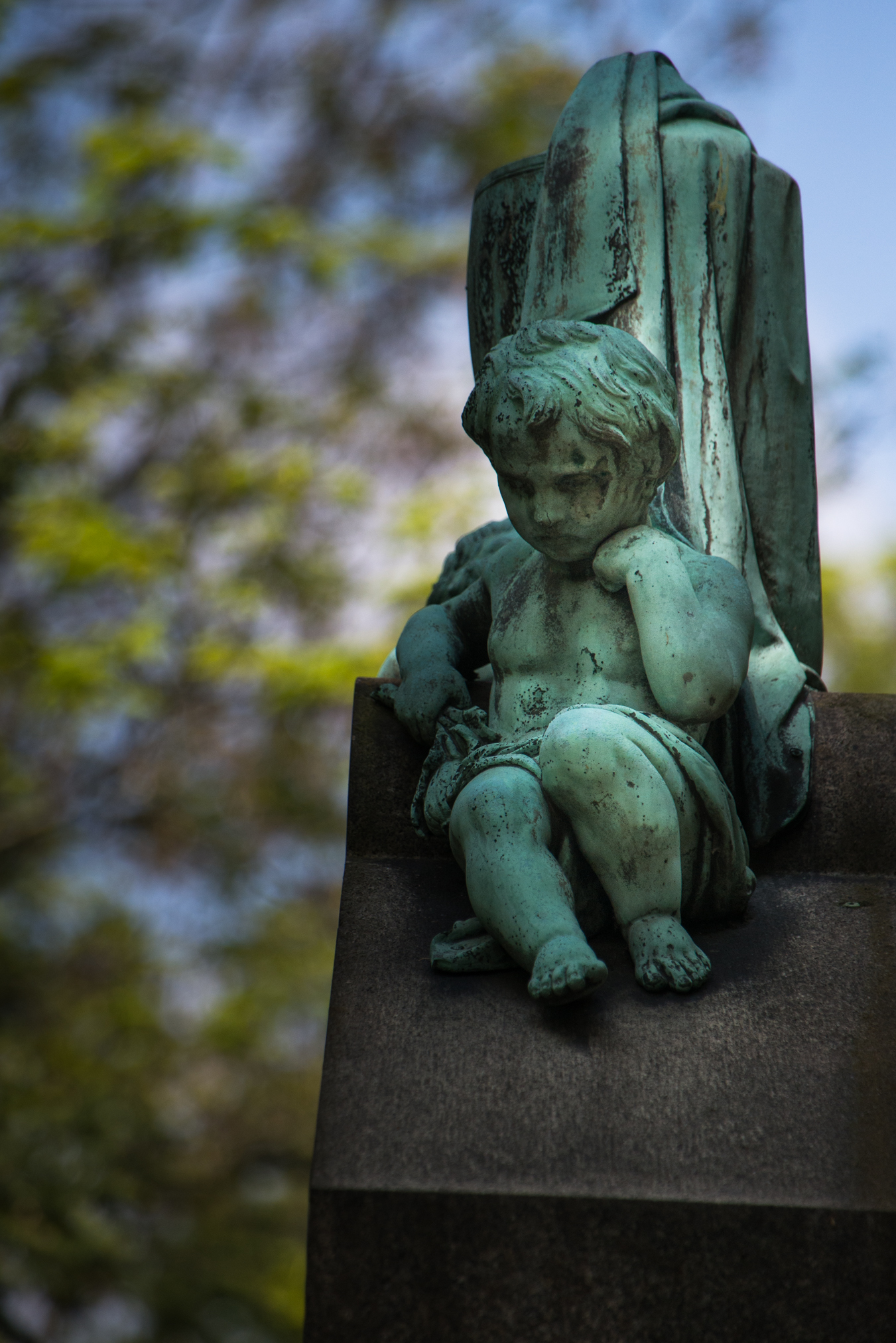
The cemetery of Père Lachaise was opened on 21 May 1804 under Napoleon I and under the premise that “every citizen has the right to be buried regardless of race or religion”. And so, in this vast cemetery, where the graves of so many celebrities are found, there are little innocent angels next to Victor Noir, and fallen soldiers, and grieving virgins and mothers, and even a chair.
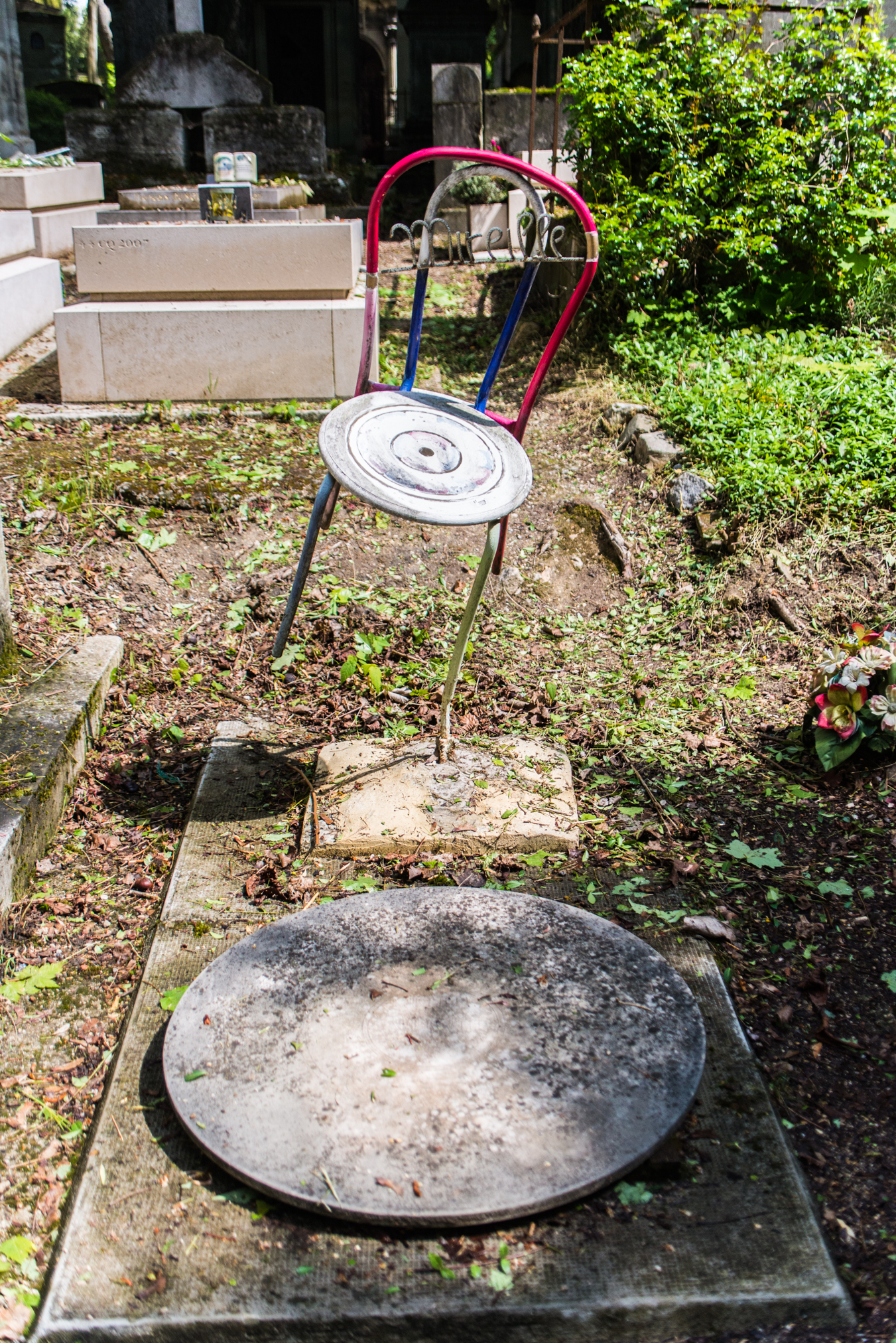
There is a heaven for all of us.
